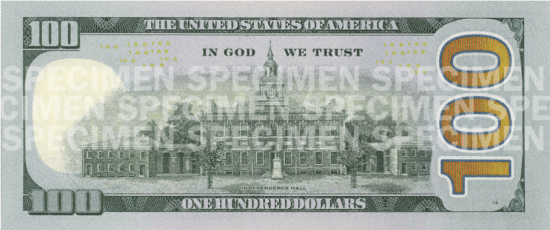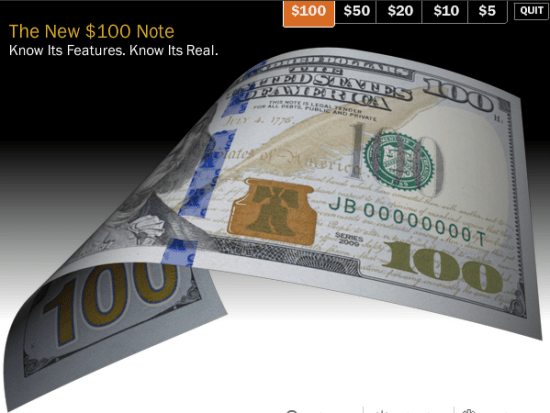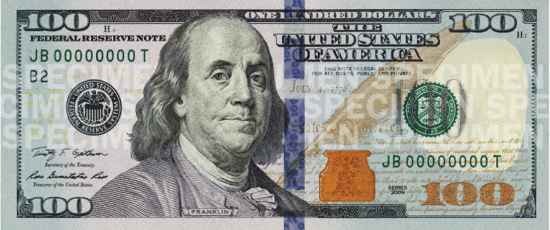New $100 Bill Unveiled with Anti-Counterfeit Technology [Pictures]
The U.S. government has just unveiled a new $100 bill, primarily as a means of combatting increasingly tech-savvy counterfeiters. The bill’s redesign is said to be particularly focused on the threat of the virtually undetectable “Superdollar” counterfeit, publicized in Rush Hour 2 and elsewhere, which the new hundred-dollar bill will set back with sophisticated technologies like a 3D security ribbon and a color-changing Liberty Bell, in addition to the “portrait watermark of Benjamin Franklin, the security thread, and the color-shifting numeral 100” present in the current $100 bill.
From the press release:
The redesigned $100 note includes two new advanced counterfeit-deterrent security features, in addition to effective security features from the previous design. The features are easy for consumers and merchants to check when verifying authenticity.
The blue 3-D Security Ribbon on the front of the new $100 note contains images of bells and 100sthat move and change from one to the other as you tilt the note. The Bell in the Inkwell on the front of the note is another new security feature. The bell changes color from copper to green when the note is tilted, an effect that makes it seem to appear and disappear within the copper inkwell.
“The new security features announced today come after more than a decade of research and development to protect our currency from counterfeiting. To ensure a seamless introduction of the new $100 note into the financial system, we will continue global public education of retailers, financial institutions and industry organizations to ensure that consumers and merchants are aware of the new security features,” said Treasurer of the United States Rosie Rios.
And here’s the back of the new $100 bill:

The Treasury Department has also made a YouTube video heralding the new bill (complete with soaring triumphal music):
There’s even a new $100 bill Flash simulator that lets you play around with the note, flip it around, and simulate what it’ll look like under differing light conditions: Yes, actually.

(NewMoney.gov via @Slate)
Have a tip we should know? [email protected]
